Museums & Institutions
How Jo Nivison Hopper, Long Known as Wife and Model of Edward Hopper, Is Being Rediscovered as an Artistic Force in Her Own Right
Elizabeth Thompson Colleary, a scholar specializing in the couple, talks about Jo's legacy.
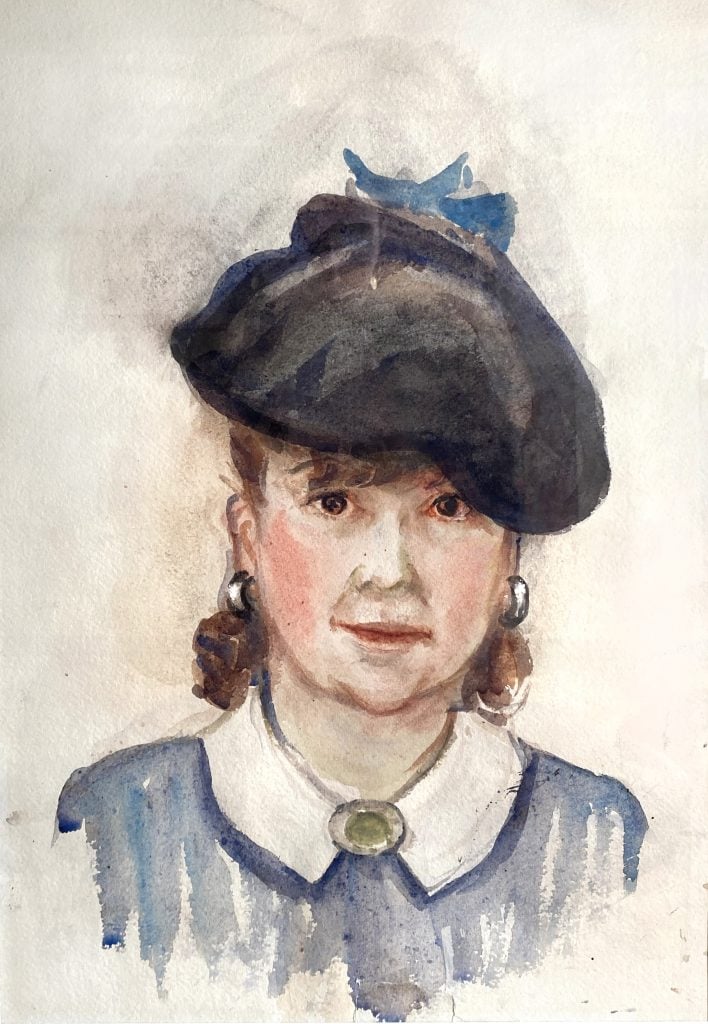
Elizabeth Thompson Colleary, a scholar specializing in the couple, talks about Jo's legacy.

Sarah Cascone

You may have heard that Josephine “Jo” Nivison Hopper, wife of famed U.S. painter Edward Hopper, was a painter in her own right. You also might have heard that her work has been lost to time, despite her tireless efforts to ensure her husband’s artistic legacy.
But what many don’t realize is that a trove of Jo’s work actually survives—and she actually is the subject of a solo show on view through this weekend at the Edward Hopper House Museum and Study Center in Nyack, New York. The show paints their 43-year marriage—a union that began when he was 41, and she was 40—as a partnership of two artists. In fact, it shows that they sometimes painted nearly identical scenes while working side-by-side, even though he sometimes gave the impression of having toiled alone.
“Josephine Nivison Hopper: Edward’s Muse” is the second outing for Jo at her husband’s childhood home, both curated by art historian and scholar Elizabeth Thompson Colleary, who has studied the couple for decades.
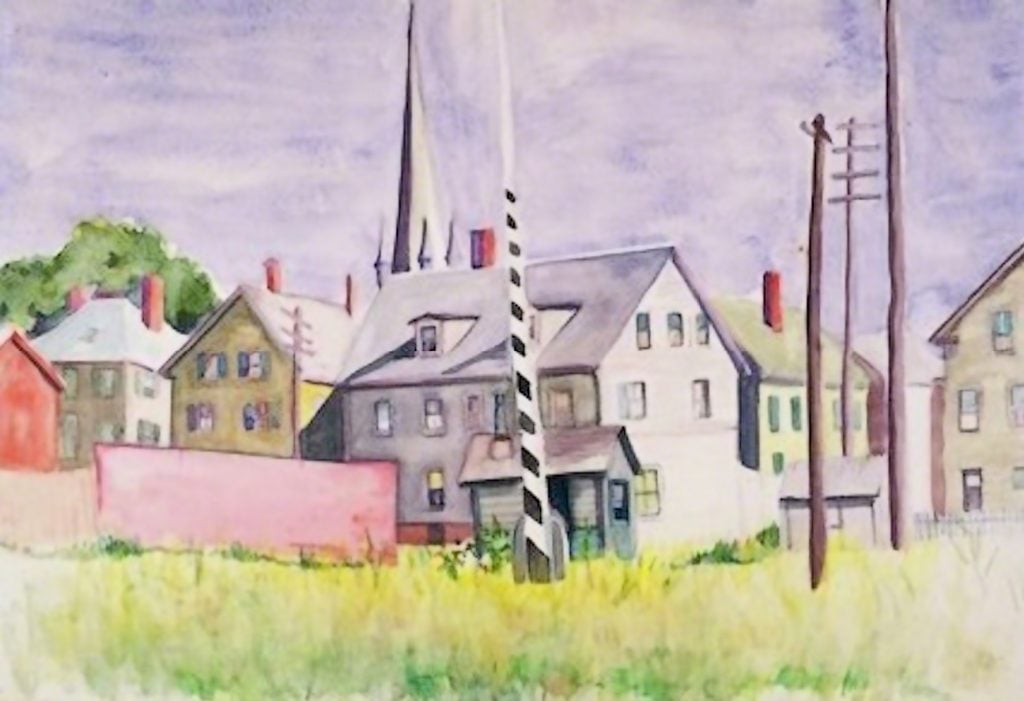
Josephine Nivison Hopper, Railroad Gates, Gloucester. Photo by Paul Mutino, courtesy of the Edward Hopper House Museum and Study Center, Nyack, New York.
Colleary’s interest in Jo’s artistic career was sparked as a grad student, but for a decade she was unable to track down a single work. Then, in the year 2000, she visited Arthayer Sanborn, a minister friend of the Hoppers, in Florida.
“I went to have an iced tea on a courtesy call, and he had one of Jo’s watercolors hanging in the bedroom,” Colleary recalled. “I said ‘I know every watercolor ever painted by Edward Hopper, but I’ve never seen that.’ And he said, ‘Well that’s not by Ed, that’s by Jo.'” When Sanborn revealed that had he had a whole box of similar paintings that Jo had left to him in the basement, it was a revelation.
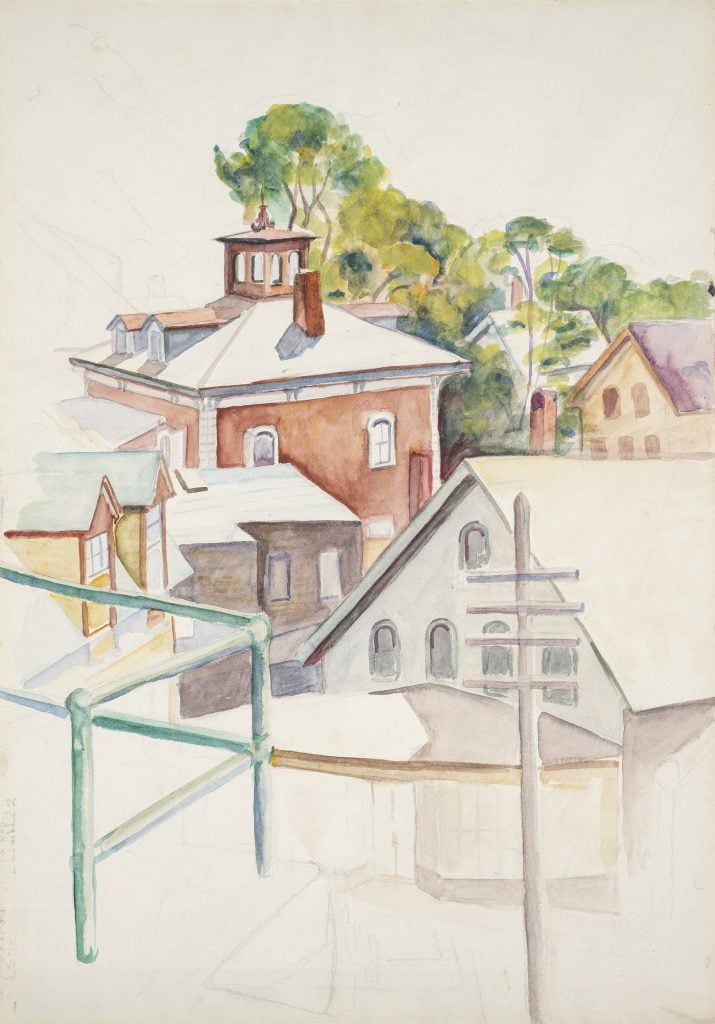
Josephine Nivison Hopper, Gloucester Roofs. Photo by Paul Mutino, courtesy of the Edward Hopper House Museum and Study Center, Nyack, New York.
That led her to take a closer look at the archives at New York’s Whitney Museum of American Art, where Jo had left the bulk of the couple’s holdings, including many examples of her own work, in a bequest. Despite rumors that the Whitney had discarded all Jo’s work, Colleary found that much of it was still there, untouched for decades. When the museum mounts a major exhibition of Edward’s work in October, it will include some of Jo’s watercolors—reuniting the husband and wife at in institution that first showed them together 100 years ago.
Ahead of the Nyack show’s final days, we spoke with Colleary about Jo’s career, her marriage to Hopper, and her artistic legacy.
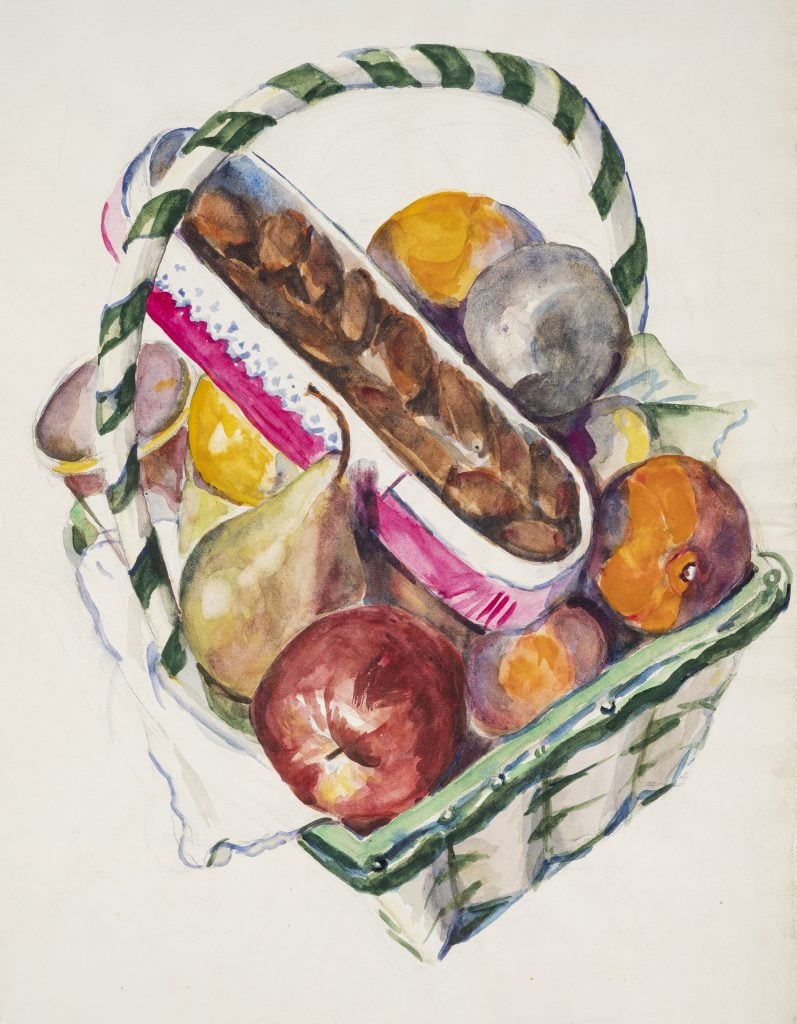
Josephine Nivison Hopper, Basket of Fruit. Photo by Paul Mutino, courtesy of the Edward Hopper House Museum and Study Center, Nyack, New York.
What was Jo’s training like as an artist?
Jo studied at the New York School of Art, with the famous teach and artist Robert Henri, beginning in 1905, when she was 22 years old. In 1906, Henri painted a famous life-size oil portrait of Jo entitled The Art Student, which shows Jo clutching her paint brushes, wearing an apron splattered with paint.
How would you describe the career trajectories of Jo and Edward before they met?
Ed and Jo knew each other dating back to their years at the New York School of Art, and they had stayed at the same boarding house with fellow artists in Ogunquit, Maine, in the summer of 1914.
When they started courting in the summer of 1923, Ed was making a living as a commercial artist. He had not sold a painting since the Armory show in 1913. Jo, however, was showing her work, mostly watercolors, as early as 1914, in group exhibitions in New York City with artists now acknowledged as American modernist masters—among them Stuart Davis, Charles Demuth, Mauriece Prendergast, Marguerite and William Zorach, and Charles Burchfield.
How did things change after their relationship began?
In 1923, after their first summer together painting in Gloucester, Massachusetts, Jo arranged for Ed’s watercolors to be included in an exhibition at the Brooklyn Museum, where she had been invited to show her work. The museum bought his watercolor The Mansard Roof, the first painting he had sold in a decade. His watercolors received such wide critical acclaim that he was able to secure a gallery exhibition that sold out—Ed was finally able to give up the commercial art work that he detested.
Ed had not painted in watercolor prior to keeping company with Jo beginning in 1923. It was her preferred medium, and it was his watercolors, not his oils, that first brought him the critical recognition that would secure his position as the preeminent American realist painter of the 20th century.
After they married in 1924, Jo continued to paint and exhibit her artwork in prestigious exhibitions with prominent artists, but she did so less frequently, as more of her time was devoted to being her husband’s caretaker, sole model, and muse. The Hoppers did exhibit together in annual exhibitions at the Whitney Studio Club as early as 1921 and intermittently through 1953 in what had by then become the Whitney Museum of American Art.
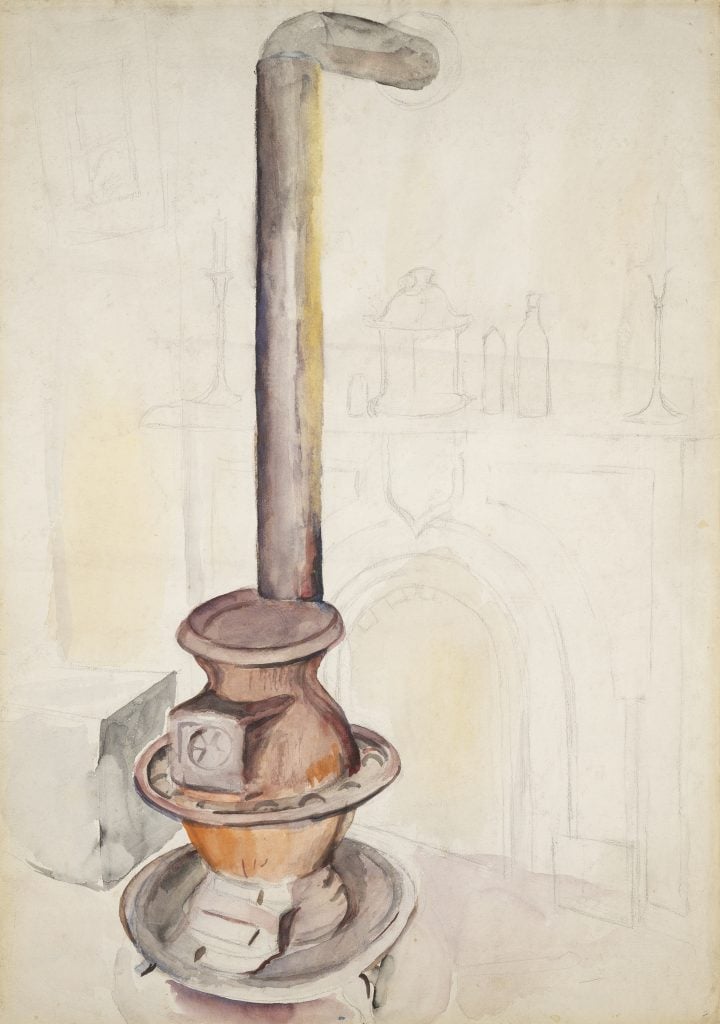
Josephine Nivison Hopper, Stove and Fireplace. Photo by Paul Mutino, courtesy of the Edward Hopper House Museum and Study Center, Nyack, New York.
Do you think theirs was a happy marriage? What kept them together all those years?
Their relationship was volatile, and they often “scrapped” due to Jo’s frustrations, and on occasion her loneliness when Ed would lock himself away to paint. This was especially problematic in Truro on Cape Cod, where they spent half the year from 1934 until Ed passed in 1967. The house is in a very isolated and barren locale, and Jo was not allowed to use their car to venture out.
Jo and Ed had opposite personalities and temperaments, but they shared many common interest such as French literature and culture, and a love for the theater and film. They were also avid readers and spent many hours together attending art exhibitions and socializing with fellow artists, patrons, and dealers. So yes, they scrapped, but in Jo’s writings there is abundant evidence of their love and affection, and devotion to one another.
How important was Jo to her husband’s artistic success?
Jo was crucial to her husband’s success serving as a painting companion, model, and muse, as well as a business manager of sorts. He was introverted and famously kept to himself, so Jo handled most of his correspondence with dealers and patrons, cultivating long-term relationships that assured their financial stability. She also kept thorough and meticulous ledger books (now in the collection of the Whitney) that documented everything he painted, exhibited, and sold for more than thirty years.
Why do you think Jo chose to dedicate her efforts to promoting Edward, rather than championing her own work?
Their financial security was dependent on the sale of his work, and he was not inclined to promote it himself. In reading all that she wrote in her letters and diaries, one does get a bit of a sense of Jo finding satisfaction in being Ed’s helpmate, the “woman behind the man.” While that idea makes many women today cringe, in the 1920s and ’30s, that was an acceptable, indeed a praised role for a married woman.
She did, at times, champion her own work after her marriage, but again, it was less frequently. Jo did lament that after his success Ed did not do more to promote her work—but he was not outgoing by temperament. He could barely promote his own work, much less hers. There are also records of him making disparaging remarks about her work and women artists in general—an attitude shared by many men of that era. He did on occasion praise her efforts, however.
When you finally saw a work by Jo, what was your reaction?
I thought the watercolors were superb when I first saw them—Jo was an excellent technician in handling watercolor pigment, which is not easy to do. She had a sonorous palette filled with radiant color that captures and expresses her “cheery” worldview. (She signed all her letters, even ones that expressed her frustration and dismay, “Cheerily, Jo.”)
I thought her work was exemplary, and in keeping with the best American modernist watercolor painters of her day—artists who I later learned she exhibited with. Clearly, her work was regarded as highly then as it is starting to be now—now that it is being shown and published.
How do the Sanborn works by Jo, which are now owned by the Edward Hopper House Museum, compare to those held by the Whitney?
The works in the Nyack exhibition are for the most part works that are of exhibition quality. When Jo gave them to Reverend Sanborn, many were mounted in the mats that were used when they were exhibited. Some of the Whitney watercolors, the best ones, were also matted, but many other works were loose sketches or studies, works that came from the Hoppers’ home and studio at Washington Square North after the Hoppers had died, and were never intended for exhibition. The Whitney also owns some superb “pochades” by Jo, small oils painted outside on boards (approximately 9 by 12 inches). They show Jo’s color and spontaneous brushwork at its best.
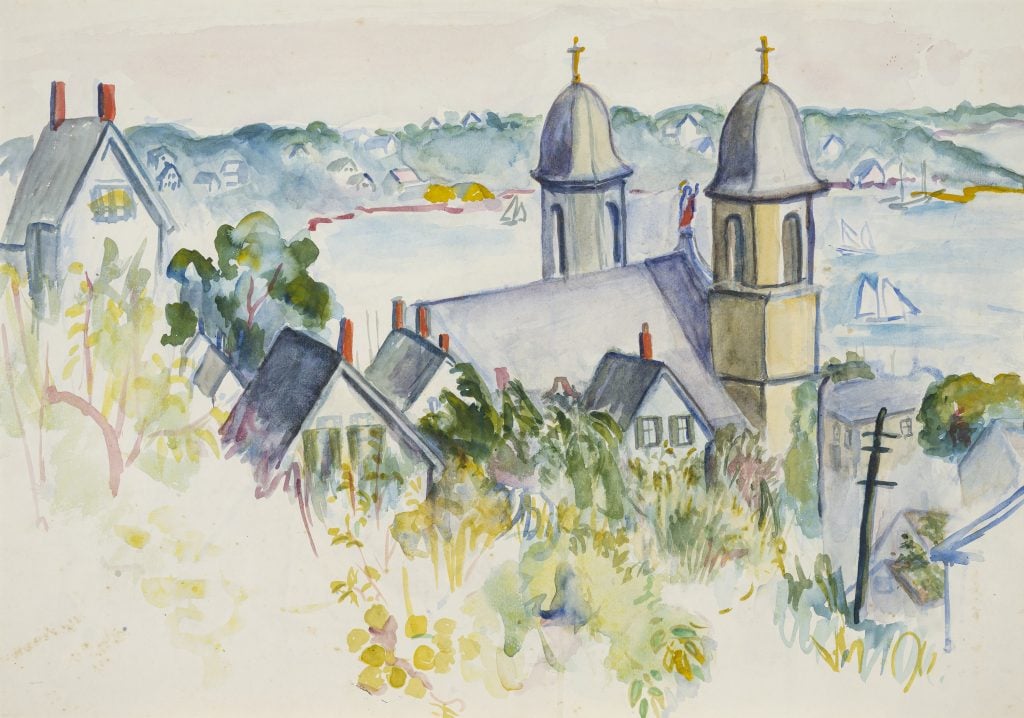
Josephine Nivison Hopper, Our Lady of Good Voyage. Photo by Paul Mutino, courtesy of the Edward Hopper House Museum and Study Center, Nyack, New York.
How does this show differ from the one you curated based on Sanborn’s collection of Jo’s work in 2014?
The earlier show, eight years ago, was a Nyack debut for the Jo watercolors, fourteen years after they emerged from Reverend Sanborn’s basement. It was the first opportunity to share them with a New York audience.
The current exhibition looks at the Hoppers’ working relationship. Their two-artist marriage was fully revealed for the first time only when Jo’s identical watercolor compositions could be studied next to her husband’s. Those comparison studies reveal Jo’s influence on her husband’s work, most notably in his watercolor technique, which become more loose and fluid, and on his palette, where the use of brighter colors can be attributed to Jo.
How has perception of Jo and her work changed since you first rediscovered it?
At first, I was scorned as a “revisionist feminist art historian.” I said, “if that means resurrecting the career of women artists who was written out of the books that were written by men, then, yeah.” She was a good artist and she deserves the recognition—like so many other women artists who were left out of the history. But now they call me a “revisionist feminist art historian” with praise!
What do you hope comes next for Jo?
The recognition and acclaim, long overdue, that she so richly deserves, as an artist in her own right, irrespective of who she married!
“Josephine Nivison Hopper: Edward’s Muse” is on view at the Edward Hopper House Museum and Study Center in Nyack, New York, October 23, 2021–March 20, 2022.